TIME ELAPSED SINCE DEPARTURE : 44 WEEKS
DISTANCE TRAVELLED : 24,804 KMS
Leaving Geraldton, I had a sense of scepticism and uncertainty. Of a couple of things. Firstly, it was of the great unknown. We were entering the wild frontier of the central and northern parts of WA. HUGE distances. Remoteness. Harshness. Not a place to get a flat tyre in the middle of the night. Or a place to get lost in. Secondly, and disappointingly, we were both a little on edge regarding our personal safety & security. We have heard a number of stories from quite a number of fellow travellers regarding caravans getting broken into, sometimes while you are sleeping! We have been told to be careful in these parts regarding locking everything away overnight. Don’t leave your camp chairs and tables outside, even during the day if you go out. We were told not to go into several towns – Halls Creek, Alice Springs, Fitzroy Crossing etc. ‘Don’t stop to assist if you see someone laying on the road – it could well be an ambush’. ‘Be careful in Fitzroy Crossing …. don’t stay in ABC park …. instead stay in XYZ park’. (Sooz: Its like the warnings people used to give us when traveling to South Africa. Go figure?!)
And on it goes, about many towns in northern WA and NT. And sadly, all these stories and warnings we have received involves our Indigenous cousins. Susan has been offered and has accepted some work in Port Hedland, Derby, Broome and Fitzroy Crossing through her old employer Jones Lang LaSalle (JLL). And that means we’ll be spending some extended time in these locations with questionable reputations. So we are both a bit jumpy about it all but we’re going there so we will just have to be aware & careful and hope that we prove the detractors wrong. At the same time, it’s not advice that we should ignore. Fingers crossed that we do not have a bad experience.
KALBARRI
We are in the Gascoyne region. From Geraldton to Kalbarri, we chose to take the coastal road rather than the main highway. This allowed a couple of stop-offs at nice little places like Horrocks which, although it’s small, looks like a place where you could easily spend a week doing nothing. Lovely spot. (Sooz: It is a dot of a town on the coast, with lovely beaches, a couple of jettys, and not much else. Looks like a great place to chill.)
There was also another PINK LAKE to view. Now give me a sec to let me climb up onto my soapbox here. Right-e-oh, here we go. Like ‘chocolate’, the name ‘Pink Lake’ seems to send females into some kind of must-have frenzy. During this trip, we have made a couple of detours or special trips to look at PINK LAKES. In Tassie, in South Australia, here in WA we have ventured to them on the basis of how they are portrayed in the glossy brochures that you can get at the Tourist Information Centres etc. And Susan loves to have a bunch of brochures to refer to. Sometimes the floor on the passenger side of the car is knee-deep in travelling brochures! It’s like a paper recycling depot. These marketing publications show the lakes in a bright pink colour that matches bubble-gum, or Marilyn Monroe’s lipstick. This colour seems to make it irresistible to the female reader and thus instructions are given to the driver on which roads to take. ‘And hurry! Coz it’s pink and looks fantastic and I don’t want to miss it’ as the marketing propaganda is waved under my nose so I can see its ‘pinkiness’. The marketing works! Yet upon arrival, these lakes are either not at all pink or perhaps have a slight tinge of pink, but only if you stand on one leg and look sideways through the wrong end of binoculars at precisely 2.47pm on a sunny day, while facing Southeast, during a waxing moon! PINK LAKES – Bah! The whole thing is a furphy! (Sooz: To be fair, some of the lakes have had a distinct pink tinge, but alas….NONE has come close to the bubble-gum pink advertised. That said – I am not prepared to miss it, IF said lake IS bubble-gum pink. So I will continue to bark instructions when we are near the next Pink Lake.)
KALBARRI is a town I had never heard of. It’s on the way to Monkey Mia from Geraldton and is a small coastal town that is a popular destination during school holidays. It’s a fair way from Perth so I am not sure where the holiday-makers come from but apparently it’s bursting during these times. (Sooz: FYI – Kalbarri is nearly 600kms northwest of Perth.) It’s got a nice feel about it with the lovely Murchison River emptying into the Indian Ocean on the town’s doorstep. The Murchison is WA’s second longest river at 820 km (the longest is the Gascoyne River at 865 km). But the local jewel is the Kalbarri National Park, just inland from the town and features magnificent gorges that the river has carved over 400 million years. It’s classic WA and something that I expect we will see more of as we head further north. Very old cliffs and rocks; red rocks stained by the iron content. In late afternoon with the sun giving the cliff faces a wonderful glow and the combination of the blue water and lovely white-trunked eucalypts ….. its an intoxicating vista. On several occasions in various locations across the park we were very happy to just sit and look and give the binoculars and cameras a good workout. Just beautiful. And peaceful. (Sooz: For more info on Kalbarri – see some of our photos – everywhere you look there are spectacular vistas; there are cliffs and gorges and stunning geological formation.)
TASMAN HOLIDAY PARK, KALBARRI 7.5/10
SHARK BAY/MONKEY MIA
There is not a lot to see between Kalbarri and SHARK BAY/MONKEY MIA. Matter of fact, things become rather desolate but the earth does become that classic red colour. The whole Shark Bay area is a World Heritage region and Marine Park. Monkey Mia is of course famous for its ‘Dolphin Feeding Experience’. Dolphins started to be fed by humans back in the 1940’s by the local fisherman. Thus, generations of the lovely animal have received food by hand but the manner in which it happens now is much different to how it happened up to about 15 years ago. Nowadays, is all very responsible with no touching of the mammals by the public or even by the guides that provide commentary. Basically, there are 3 feeding session in the morning, the first staring at about 7.45 am. Only a small amount of fish is provided so that the creatures do not become reliant on us humans for a feed. There are a number of dolphins that regularly appear and they are a family group and this is their territory and so the same ones are seen each day, although we learned that the adult ones will choose whether they want to appear or not. A couple of guides stand knee deep in the water (only 2 or 3 metres from shore) while all of us punters are about half way up the beach behind a rope, about 10 metres from the water. After a bit of background commentary, the public are invited to come to the waters edge but no further than ankle deep while the dolphins wallow expectantly in the shallows. After about 10 minutes of more quite interesting commentary, some more guides appear with a couple of buckets containing a small quantity of ‘fish du jour’. The feeding occurs (again, no humans touching the animals) the buckets are then turned upside down and the dolphins have learned that there is thus no more food and off they swim. They will return some 15 or 20 minutes later for another feeding session that follows the same routine and then a 3rd session occurs. It’s all done & dusted by about 10am. So it’s all very ‘woke’ and environmentally conscious etc and a nice experience. Whatever happened to the days when you could grab Flipper, give him a big kiss and feed him some chips or lollies? (Sooz: Now Leigh did not make the experience sound worthwhile, but I reckon it is. Yes, it has been modernised and sanitised, but when a wild dolphin slowly swims by you in 20cms of water, only a few feet away and looks you in the eye – It is mesmerising. Truly. And in that short time, it happened over and over again. I enjoyed every minute!)
We stayed at the campground (it’s more like a resort!) at Monkey Mia and there is nothing else there except for a lot of food-stealing emus. The ‘resorty’ campground right by the beach where the Dolphins are fed. (Sooz: Re: Emus…OMG! At this park there are dozens of them and they are as cheeky as monkeys in Africa. One even snuck up behind me, and popped his head over my shoulder and tried to get my breakfast toast as I was putting it into my mouth! Luckily he missed, pecked the plate and scared both himself and me instead.) Denham is the nearest town which has other accommodation options and things like a pub and IGA and is about 25 km away on the other side of a peninsula. We spent a few hours in Denham one lovely sunny day and dangled a line from the nearby jetty. (Sooz: I even have video footage of an emu strutting down the main street of Denham, not caring about the traffic he was holding up.) We also spent a couple of hours amongst the scrub off the side of the one road that gets you in and out of Shark Bay, checking out the astonishing number of animal tracks that were evident in the red, sandy dust. Despite all the footprints of different sizes and shapes, there was no evidence of live creatures during the day.
The Shark Bay area is not a place where you say ‘WOW’ upon arrival. But the longer you are there, the more it grows on you and when we left after 3 nights, I felt that I wanted to stay longer and explore it’s hard-to-get-to spots, of which there are many. I liked it’s remoteness and it’s isolation. The topography is quite flat but there is the contrast in colours with the red dirt, the blue water, white sand and green scrub.
(Sooz: No one knows exactly where the name Monkey Mia comes from. The Mia part is an Aboriginal term for home. Theories include that Monkey refers to:
- – a ship which visited the area
- – pet monkeys the Malaysian pearl farmers brought over in the 1850s – I like this theory 😊)
RAC MONKEY MIA DOLPHIN RESORT : 9.0/10 Sooz: 9.5/10
NINGALOO REEF 20/6/23
We are going to be staying at two different locations along the coast opposite the reef in the attempt to gain a full experience of this place that I have heard so much about. This is a bucket list destination.
Firstly, the reef itself is called a ‘fringe reef’ and is one of only a handful of places in the world where this occurs. ‘Fringe’ refers to how close the coral is to the shore. The Ningaloo Reef is the longest of this kind at some 280km.
Our first stint is 4 nights at CORAL BAY. This little place is smaller than a hamlet! It is basically only two caravan parks, a backpackers joint, a small low key resort, a smattering of shops and a (good) pub. It is extremely laid back and quite basic and reminds me a bit of a childhood travel destination where not much goes on, but you enjoy it nonetheless. There is no need to get into the car to go anywhere – you walk no more than 400 metres to get to the furthest place, being the pub. The beach is over the road. There is no through traffic – Coral Bay is at the very end of a road that is off Highway 1. At low tide, you can walk out over a sandbank that would be 100 meters wide to a bit of a drop-off. There you can let yourself fall into 4 feet of turquoise water and if you are wearing a mask & snorkel there will be fish and coral. This is what a ‘fringe’ reef offers. The delights of a coral reef, right by the shore.
Through our old friend and travel agent extraordinaire Sue Nicol, we booked a couple of ‘experiences’. Sailing out of Coral Bay we had a wonderful ‘SWIM WITH MANTA RAYS’ event that ticked every box. Not only were we treated with multiple chances to snorkel with them, but there were multiple numbers of these creatures. The most we had at one time was four. They were cruising and feeding and our presence didn’t seem to perturb them in the slightest. They swam around us and under us and were almost close enough to touch on occasions although that would put you in the naughty corner. Remember – no touching the animals. We were asked to respect them and try to stay clear. Bugger …. I was hoping to use my hidden Swiss army knife to cut off a piece of fin as a souvenir 😊. The thing that I reckon about Manta Rays is that they are a rather fearsome looking creature with the wide mouth and alien looking flaps that hang down at the sides of their mouth area, and that nasty looking tail. I was relieved to learn on the boat before we got into the water that their tail does not contain a nasty barb. You can put your hand in their mouth with no nasty outcome either as they have no teeth. Good luck attempting to do that – they can be flighty and can reach speeds of 60 kmh. That allows them to outrun their main predator (sharks) as they have no form of defence other than speed. We also spotted a big Green turtle and a small one and a monster Loggerhead turtle (Sooz: He is named Albert and is 80 years old) who was sitting on the sandy bottom feeding on a yummy clump of weed. Then he came up to the surface for some air, right in between us all. There was a moray eel, plenty of fish of all sorts and the lovely coral gardens. And as a bonus, as we were getting ready to start motoring back to the Bay, there was a shout of ‘WHALE AHOY’! For the next 20 minutes or so we followed a pod of Humpbacks and they were very obliging by leaping into the air to say hello to us a number of times. Fantastic. Sooz & I are both certified SCUBA divers and have also done plenty of snorkelling in our time – this was one of the better underwater experiences we have had. Ningaloo delivered! (Sooz: It was spectacular!! One of my favourite water experiences ever! We were told normally Manta Rays are solitary creatures, so swimming with four around us at once was special. Also, typical manta rays are dark grey on their backs and mostly white on their undersides. We saw two typical mantas and two melanistic (or black) mantas. These were completely black all over. About 15% of the population in the area are melanistic.)
PEOPLES PARK, CORAL BAY 7/10
EXMOUTH
So could the experience with the Manta Rays be outdone? It was hard to imagine that it could be. Our next stop was at EXMOUTH which also lies along the Ningaloo Reef shoreline. We have a full week here. What I did not know about Exmouth is that there was nothing here until the 1940’s when Australia agreed to a USA request to establish a secret military base – mostly for submarines to be serviced and re-fuelled. This had been occurring in Fremantle but with Exmouth about 1300 kilometres closer to the WWII action and being so remote, the decision was made. The Yanks went crazy and built their base in no time including diners and a bowling alley and comfortable sleeping quarters and seemed to have unlimited supplies of luxury consumables. (Sooz: Apparently they even drove on the right -hand side of the street on the base.) The poor ol’ Aussie troops that were also stationed in the area were sleeping in tents and living on Bully Beef. Consequently, plenty of behind-the-scenes dealing went on, just like with Gruber in McHales Navy! Buying & selling & dodgy deals being negotiated. Consequently, American cigarettes and chocolate and beer found their way into the Australian camp. I have no idea what the Aust troops exchanged for these luxuries, other than their entire pay packet. The base still exists and there is no photography allowed from the road that runs past it. After the war, the USA required a communication station and in the 1960’s an extraordinary arrangement of antennas were built which still stand and are still used today. It is the largest VLF (Very Low Frequency) transmission station in the world where 13 towers between 995 and 1200 feet high were built in a kaleidoscope type pattern and all interconnected with wires and all anchored to the ground with huge cables and concrete blocks to protect against cyclonic winds. Its almost like a giant net. And the
towers are taller than that famous one in the centre of Paris. This station allows communication with submarines all over the world and you can get pretty close to it all. The Yanks have now gone and it’s all operated by Australia but the USA still uses it for submarine comms. (Sooz: We Yanks – the United States Navy, in fact – still run the Pier. It is USA property, and you have to show your passport to even dive near the pier.)
But Exmouth had a whole lot more. Again, through our friend Sue Nicol (call her at at Southern World Travel, Sydney, for all your local travel needs! How’s that for a shameless plug?) we were booked to have an encounter with WHALE SHARKS. WOO-HOO! It works like this: it’s an early start. Up at 6am (you’re kidding – I am on holidays) to be collected just before 7am. Not a large group – maybe twenty. (good).
Once on board the nice spacious boat, you motor out to a calm, sheltered area inside the reef where all the paying punters go for a warm-up snorkel. This allows the crew to work out who might cause a search & rescue operation and who has some idea about what they are doing. It turned out that we did have a couple of candidates where this might be their last day alive. Just not suited to a mask & snorkel but by weeding them out it makes for a better experience for the rest of us. This ‘practise’ snorkel was just tremendous – one of the best we have ever done. The quantity of fish and the coral colours were fantastic! And I was lucky to find a fish species hiding under a coral shelf that is endemic to Ningaloo – a Sail Fin Catfish. (Sooz: I thought the previous encounter couldn’t be beat, but this snorkel was really something else. There were so many schools of different types of fish it was hard to know where to look. Just spectacular!) So then it’s onto the real stuff in the open ocean, on the outside of the reef. There is a spotter plane in the air and a couple of other tour boats in the area all communicating to where the Whale Sharks are. We had all been well briefed on the procedure of getting into and out of the water and how it would work when swimming with the beasts and much sooner than I expected, the call was out. GROUP 1, GET READY. That’s about 10 of us. With wetsuits already on, we had to get to the back of the boat fix masks and fins and sit side by side in a couple of rows on the rear steps that led onto the marlin board. Then the crew member gets the signal from the skipper and it’s ‘GO GO GO’ and into the water we plunge. We all do our best to get into a straight line with our guide at the front. Then the command is given to ‘LOOK DOWN’. I did that and all I could see were the dark blue depths (we were now in deep ocean water). I was looking straight down trying to spot the big fish when Sooz nudged me and pointed. There was the prize – this huge and wonderful spotted Whale Shark that was swimming not below us, but just below the surface and only a few meters away! Wide mouth, graceful, green, with remoras hanging on to it’s underside for the ride. Moving along at a pace that allowed you to swim with it for a while – perhaps 50 metres or so before you started to lose touch, even though I had my good set of divers fins on and was working hard. As it slides past, you then had to be aware of it’s huge tail that sweeps from side to side. And on it swims into the distance. At this time, our group is all scattered as some could not keep up with it so we clustered as best we could into small groups and treaded water while the boat came by to collect us. (Sooz: As it glides along, it looks slow and graceful. Then you try to swim with it. I’m not a strong swimmer, so even with fins, going flat out, I only got about 20metres by its side and then would drop back to see its tail gracefully wave goodbye.) This pattern was repeated 7 times over the day. We had 4 separate swims with the first animal. After encounter #1 we get collected by the boat, it steams ahead of the animal and we all go in again. Rinse & repeat. We then had 3 swims with a different Whale Shark that was larger – about 8 metres according to our Guides. It looked so much bigger when you are underwater, where things are naturally magnified by about 25% and given that you really are quite close to them, they do look enormous. What a creature. And we know so little about them – we don’t know where they go, we don’t know how they breed, we don’t know how many there are but we do know that they can dive to 1500 metres! And as with our Manta Ray experience a few days prior, we were lucky enough to motor alongside a pod of 4 humpback whales for 45 minutes before we headed home. This event was a lifetime experience, one that you will always remember and probably bore listeners with for years. So get ready when I see you next! 🙂 So very good and we are both so pleased that we visited this part of Australia and undertook these activities. Only problem is that after all the good things that Ningaloo has thrown at us – we may well be relatively unimpressed about what remains ahead of us for the rest of the trip! 😊 (Although, somehow I feel that there are many more great times to come) Thanks for booking it for us, Sue xx

The town of Exmouth lies on a reasonably long finger-like peninsula, that juts out a bit from the mainland and then turns right and runs parallel to it. Exmouth is on the inside of the peninsula and thus in the sheltered waters of Exmouth Gulf. On the outside or Indian Ocean side of the peninsula is where Ningaloo reef is as well as CAPE RANGE NATIONAL PARK. Now it’s not necessarily the aesthetically most beautiful NP you have ever seen – its remote, it’s arid, it’s scrubby and it would be unbearably hot in summer. But this National Park includes a couple of pretty neat places: one being some of the beaches along its coast. One beach in particular is an absolute beauty – TURQUOISE BAY. What you do here is stroll from the parking area onto the perfect sandy beach, find yourself a spot to plonk on but not before removing chunks of coral that are partially buried in the sand and are like laying on small rocks and then get yourself ready for a lovely experience. You don your mask and snorkel and fins (and wetsuit, if you are over 60 and feel the cold – the water temp is about 21 in late June) and wade in and paddle out for 100 metres or so and then do nothing but enjoy the ride. There is a natural current that gently runs parallel to the beach and you can let it drift you past numerous coral gardens and all sorts of fish and other marine delights. The current will take you 300 metres or so before it changes direction and starts carrying you out to sea, through a natural break in the reef and onwards towards Africa. So it’s worthwhile paying attention to where you are unless you have packed a lunch, a safari suit and passport and are prepared for a long swim. A really nice spot. (Sooz: Cape Range also has a population of the endangered black flanked rock wallaby. They are small, shy, nocturnal marsupials, growing to a maximum of 50cm and 9kg (the average is only about 5kg). We were lucky enough to spot some on a walk through a gorge. There were 5 or 6, including a mama and joey, sunning themselves on the opposite side of the gorge. Cool!)
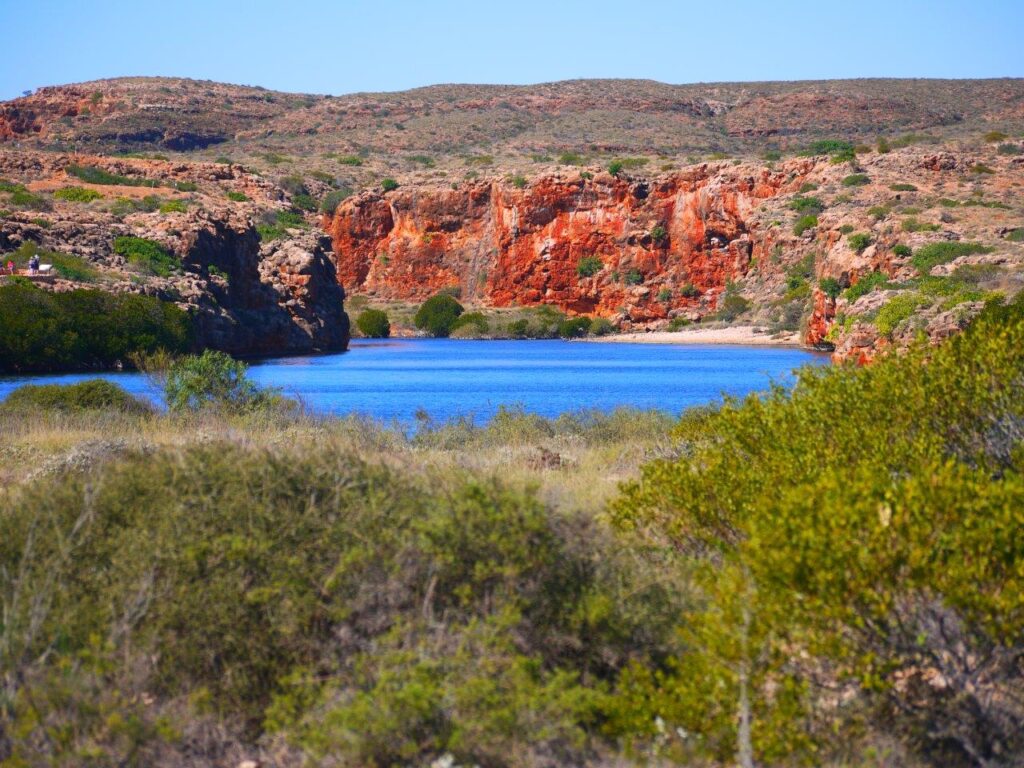
The other place to visit is CHARLES KNIFE CANYON. This canyon is named after ol’ Charlie who was a surveyor who plotted the path for the WA Government’s oil exploration division through this rugged terrain. There was belief that oil existed in ‘them thar hills’ which was correct, but not in commercially viable quantities as it turned out. The road that you take to the point some 300 metres above sea level where rigs drilled for oil is today regarded as a terrific feat of overcoming hostile terrain and conditions in the search for ‘black gold’. (Sooz: Plus, ol’ Charlie is our good friend Sue (yes, the same travel agent Sue) and Bel’s grandfather. How cool to know someone whose relatives work was impactful enough to have a street and a canyon named after him!)
RAC EXMOUTH CAPE HOLIDAY PARK : 8/10 Sooz: 8.5/10
Our next stop was for one night only as a break between the long haul to Karratha. We generally don’t want to do more than about 400 km in any one day as towing 3 tonnes and not being in a rush and stopping for breaks and to look at things means that 400 km can easily take us 6 or 7 hours. Heck – we are on holidays. Gotta take it easy. The NANUTARRA ROADHOUSE was the target which was about halfway to Karratha and thus about 280 km away. That’s a good distance for one day. We arranged to meet an old work colleague of mine – a customer of 20+ years who was also on the road with her hubby but going in the opposite direction to us. Dawn & Pagey had been travelling from Kingaroy in QLD across the top of Aust and were now heading down the West Coast. It was nice to catch up – a big cheerio to you, Dawn. Nice to meet you, Pagey.😊.
KARRATHA
We are now in the legendary PILBARA district – that place that is up in WA somewhere and where iron ore comes from. I had heard of Karratha but knew nothing about it and didn’t know what to expect. What we got was a bit of a surprise. It’s a coastal based heavy industry/mining town (that’s probably not a surprise). Lots of hi-vis yellow marked on vehicles and being worn in supermarkets and pie shops. And while it’s not the prettiest town you have ever been to, it’s certainly wealthy. All those stories you have heard about the big $$ that can be earned in mining is well reflected here. One of the big local employers is Rio Tinto. Their iron ore port loading terminal is here and I heard that if you work for Rio, they will give you a house to live in, rent free. That’s if you choose not to be a ‘FIFO’ worker – Fly In, Fly out. The FIFO workers will fly in from Perth, work for 2 or 3 weeks straight (12 hour days, no weekend) and then fly home for 2 weeks. Those who choose to stay locally get a house to live in. And it’s very obvious that there is good money being earned as so many houses had a boat or caravan or jet ski or all of these toys parked in the driveway and on the nature-strip. Those miners are doing alright! Good on them – you do make sacrifices to live and work in Karratha.
On the outskirts of town is a massive gas plant, owned by Woodside. This thing is a monster that is difficult to describe. You can stand on high points nearby to try to see it in its entirety but its too bloody big. It’s a roaring, heaving beast with the gas flames burning off waste and you can hear them burning from kilometres away. It’s Woodside’s North West Shelf gas terminal which is also a loading point for ships that have those huge bulbulous white domes on them. And we witnessed busloads of hi-vis wearing workers being shuttled in and out of the plant at shift changeover. Many busloads! Convoys of busses! And all of this is happening right next to an ancient indigenous heritage site where there are mountains of billion year old boulders that have the most Aboriginal engravings that have ever been found. Archaeologists have determined that there is up to ONE MILLION engravings in the area that date back 20,000 years. Right by this huge industrial fire-breathing monolith! We took a stroll one afternoon amongst these rocks and the engravings are everywhere. It’s astonishing! And interestingly, there are engravings of the Thylacine – the Tassie Tiger – that has not been on the mainland for 3000 years. (Sooz: The rock art site we visited is unlike anything I have ever seen. It is piles and piles of massive boulder and rock jumbles. It looks like the rubbish after excavating a huge hole. But its not. Some of the art is prominent and some is quite faint. But once you start seeing the works, you see more, and more and more. It is just everywhere.. We also started to see Sturt Desert Peas in bloom. Beautiful!)
DISCOVERY PARKS PILBARRA, KARRATHA : 6/10
PORT HEDLAND
If you think that Karratha is an industrial town, then get ready to have that idea superceded. Firstly, the 3 hour drive from Karratha to Port Hedland is probably one of the more uninspiring drives we have taken thus far. The 240 kilometres between those two towns is dry, red, barren, parched, stony, scrubby, sometimes grassy and mostly flat. Pretty bloody ordinary. There is the odd cattle station here and there but sheesh, it’s tough terrain. I would not like to be taking the drive in January when the heat is relentless and over 40 degrees. We had mirages on the road and it was only 25 degrees! (Sooz: Crossing the Nullabor was a much more interesting drive!) But this is where you can find a lot of wildlife – mostly birds – when you come across a river that has water in it. So many rivers are dry, at least at this time of year. We stopped for a cuppa near a flowing river and there were hundreds of Corellas sitting in the trees nearby, squawking and socialising. Nice.
Driving into Port Hedland makes you question your decision making strategy. You are looking around at the barren wasteland asking yourself ‘why am I here’? And ‘what are we going to do here?’ It just might be one of Australia’s ugliest towns on first impressions. We have 9 days here because Sooz has been offered work from her old employer in Sydney. Basically, they (JLL) told her that they need people to do building inspections in remote areas. This was a good opportunity for her and will help fund our trip. I have to say – it has been 11 months on the road and any in-coming funds would be most welcome! So while the good lady is earning the moola, I will have to entertain myself in a town that looks like a dirty, featureless dump! ☹ There are a couple of large white mountains of salt which is one of the products the town produces and is one of the first things you see. As you drive past them you wonder about their exposure to the elements and the red dust. Bulldozers are driving up and down these mountains pushing the salt around. But it’s the iron ore that this town is known for. Port Hedland is the largest bulk export port in the world! Last year, 560 million tonnes of iron ore was loaded onto ships and sent offshore. Wow. That’s a big chunk of Australia sent offshore by BHP, Gina Rinehart and Twiggy’s Fortescue Metals in just one year. To put that into perspective, there are these enormously long trains carrying all that Aussie dirt into this port town from the mines inland. Many of the trains are over 2 kilometres in length. The longest train recorded was a BHP train at 7.5 km!! You just stop what you are doing to look at them as they go slowly chugging by – it’s incredible – and they are coming and going all day and all night. The average train will have about 260 wagons that each carries 110 tones. So one average train has about 30,000 tonnes of ore. Therefore, last year, given how much dirt was shipped from Port Hedland, there were 18,600 enormous trainloads of iron ore shipped offshore. Have a think about that! 18,600 train loads! (Sooz: This close to port, the trains travel relatively slowly. Luckily, the roads all have flyovers, so we never had to wait at a level crossing for one of these trains to pass.) Or how about this. I sat for hours at a time at the port, where you can watch the incredibly huge iron ore carrying ships come and go. They are just ginormous. And from the vantage points available, like at the local jetty, you can get really close to them to appreciate their size!
When they arrive in port, they sit high in the water – the red paint on the bottom part of the hull – the water line or plimsoll line– is way above the water. 10 metres or so. When they leave, you cannot see any red paint! They are full. Each huge ship is 300 metres or more in length. That’s 3 Rugby League (or NFL) pitches, or almost 2 AFL grounds long. It’s a stunning visual impact to see them close up. Now these massive ships each carry in the region of 3 or 4 of those trainloads of iron ore, or about 100,000 – 120,000 or so tonnes of our red dirt. In 2022, somewhere around 4600 of these ships full of Australia, were sent offshore, mostly to China. Four thousand, six hundred huge, giant ships full of red dirt!!! And have a guess at how many of these massive vessels are anchored offshore, waiting to be loaded with some Australian dirt. I will give you the answer soon 😊
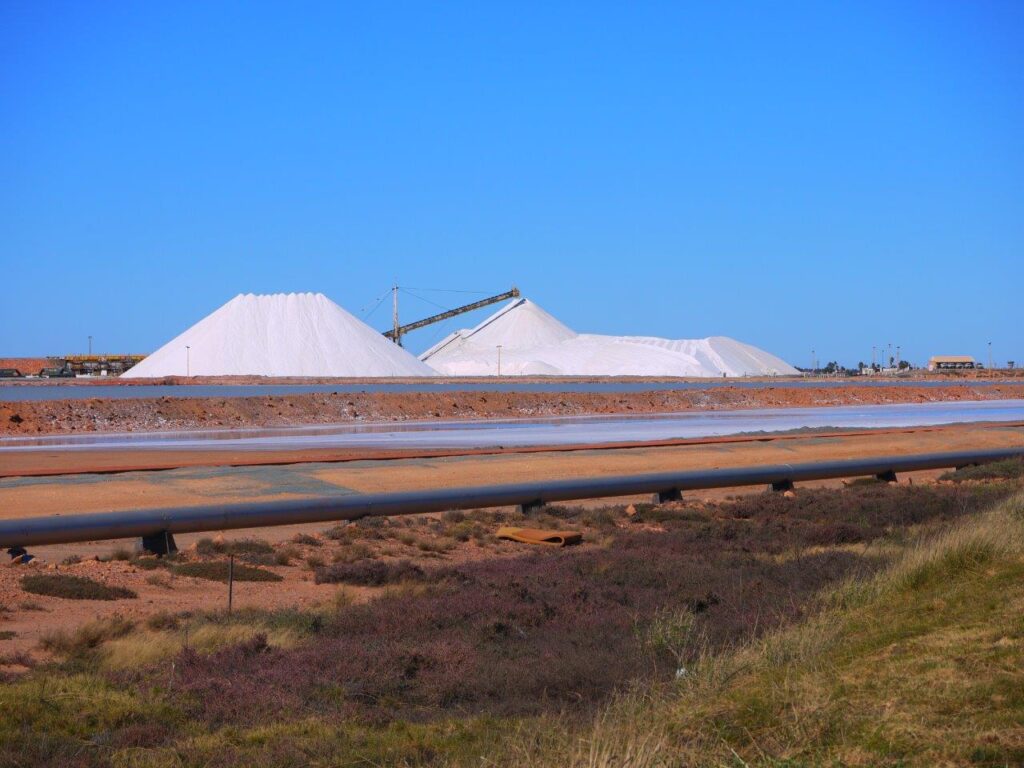
So all of that – the huge diesel trains, the huge ships, the piles of iron ore, the huge mountains of salt, the bulldozers – the town is constantly throbbing under this load and you can hear it and feel it night and day. 24/7. Unfortunately, as mentioned earlier, it’s not an attractive town as the whole place looks like it is stained from the red iron ore dust. Buildings, roads, footpaths, rooves, windows – everything that you can see, touch and sit on has a dull reddish tint to it. The whole place looks like it is rusting. Or blushing! If you choose to sit on the local park bench for lunch, wear red pants!
There are huge tidal movements – at the local jetty the water will rise and fall by 5 to 7 metres. This makes the movement of shipping a big challenge. Not only because the water levels can change by so much where, at lower tides, there might only be 30 cm between the bottom of the ship and the bottom of the harbour (that’s a fact!) but also because the volume of water flowing with these huge tides has these mega-ships moving along the shipping channels that lead into or out of the port at a crazy angle, guided by several tugs trying to keep them as straight as possible! Consequently, there are a number of ship pilots that travel by helicopter from land to the ships to guide them in or assist them back out. The helicopter is coming and going all day. And here is the answer to my quiz question – how many ships are anchored offshore waiting to be loaded up with ‘Australia’?
Answer: Standing at the shore and gazing out to sea (as I did several times), you can count up to about 18 or so. That’s a lot of very big ships! Well, as we were reminded by the tour guide from the Seafarers Centre (and it was an excellent Port tour that we did) the earth is not flat! Over the horizon and out of view there are more ships anchored and waiting their turn. On any normal day, there will be up to 60 huge ships anchored off Port Hedland and waiting to be told that their turn is next. Sixty ships! OMG!
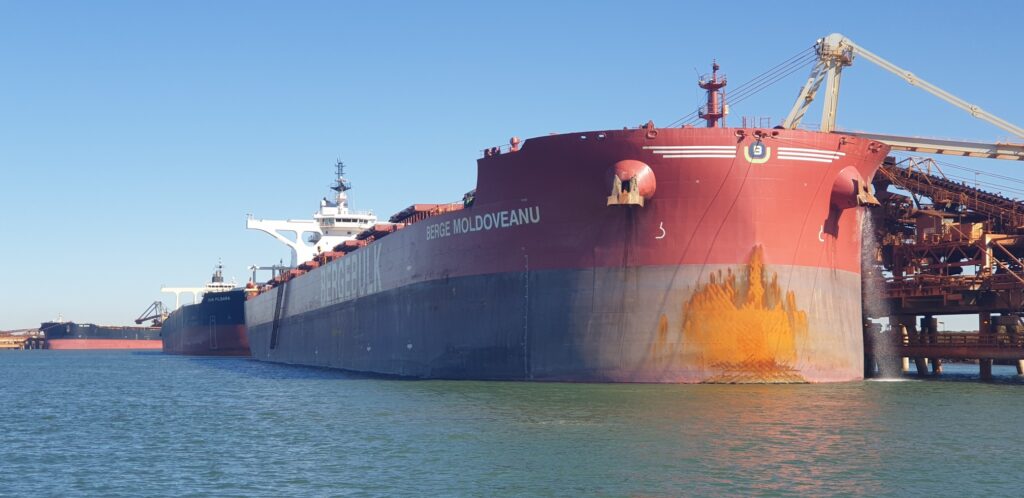
Finally, we took a long 420km return day-trip from Port Hedland to MARBLE BAR on a warm & lazy Sunday. We had to do it as it’s an iconic town literally ‘burnt’ into the Aussie psyche. (Pun intended) It’s Australia’s hottest town. Officially. Further, I think anyone that has heard of it wonders what it is like. Well, I always have and thus that curiosity had to be satisfied while we were within striking distance. Besides that, I do not personally know of anyone that has been there, so it’s somewhat of a milestone and provides me with some bragging rights! I don’t have many! Marble Bar was named after the rock formations in the area that are quite astounding. (check our photos) Across a large area is this striped, multi-coloured, smooth rocky expanse that looks everything like marble should, except it isn’t marble! It’s actually Jasper and quartz swirled in together and I have never seen anything like it. So the bloke who named the place got it wrong. Should be Jasper Bar. Perhaps he knew it wasn’t marble but liked the sound of the name better? But the ‘town’……. Struth! There is a Cop-Shop in a nice old stone building and then it’s all downhill from there. There’s a very average General Store that is also a servo but half the pumps don’t work, there are a few boarded up buildings, some tumbleweeds a handful of well weathered houses and a pub. Oh, and a racecourse. The pub is one of those ‘classic’ outback pubs with a corrugated tin exterior and all sorts of silly, strange and sometimes interesting stuff hanging up inside. Make sure you see the photo of Sooz with one of the pub patrons. You know, the types that you would NEVER see in any part of any major city. And the pub owner is cleaning up financially despite a local population of only 120 and with a large % being indigenous. A can of standard Emu Export beer (there are no beer taps) costs $10.50 and if you want a takeaway slab of 24 cans (or ‘block’ as they call it), it will cost you $85. And they sell plenty of ‘blocks’.
So Marble Bar that in 1923-24 experienced 160 days in a row of temperatures over 37.7 degrees C (100 degrees F) and has registered Australia’s highest temp of 50 degrees has absolutely nothing going for it except for record high temps, record high beer prices, a quirky pub and some strange patterned rock which isn’t made out of what was originally thought. But I have been there, and you haven’t!
SUMMARY: I have written a lot about Port Hedland and not because it’s attractive nor enticing. But it is interesting and no doubt is a remote & dusty powerhouse of the ‘Stralian’ economy that it’s locals seem to love despite their permanently reddish stained complexion! 😊 I am glad to have spent time there.
Sooz: Just a little extra to add. I spent most of my time here working. As Leigh mentioned, I am conducting property inspections. It is interesting, I am meeting some of the locals, and seeing how people live and work. Some of the homes are spotless inside, but it is impossible to keep them spotless outside. No one can keep up with the red dust.
DISCOVERY PARKS PORT HEDLAND 6.5/10 Sooz: 7/10
Share this post: on Twitter on Facebook on Google+
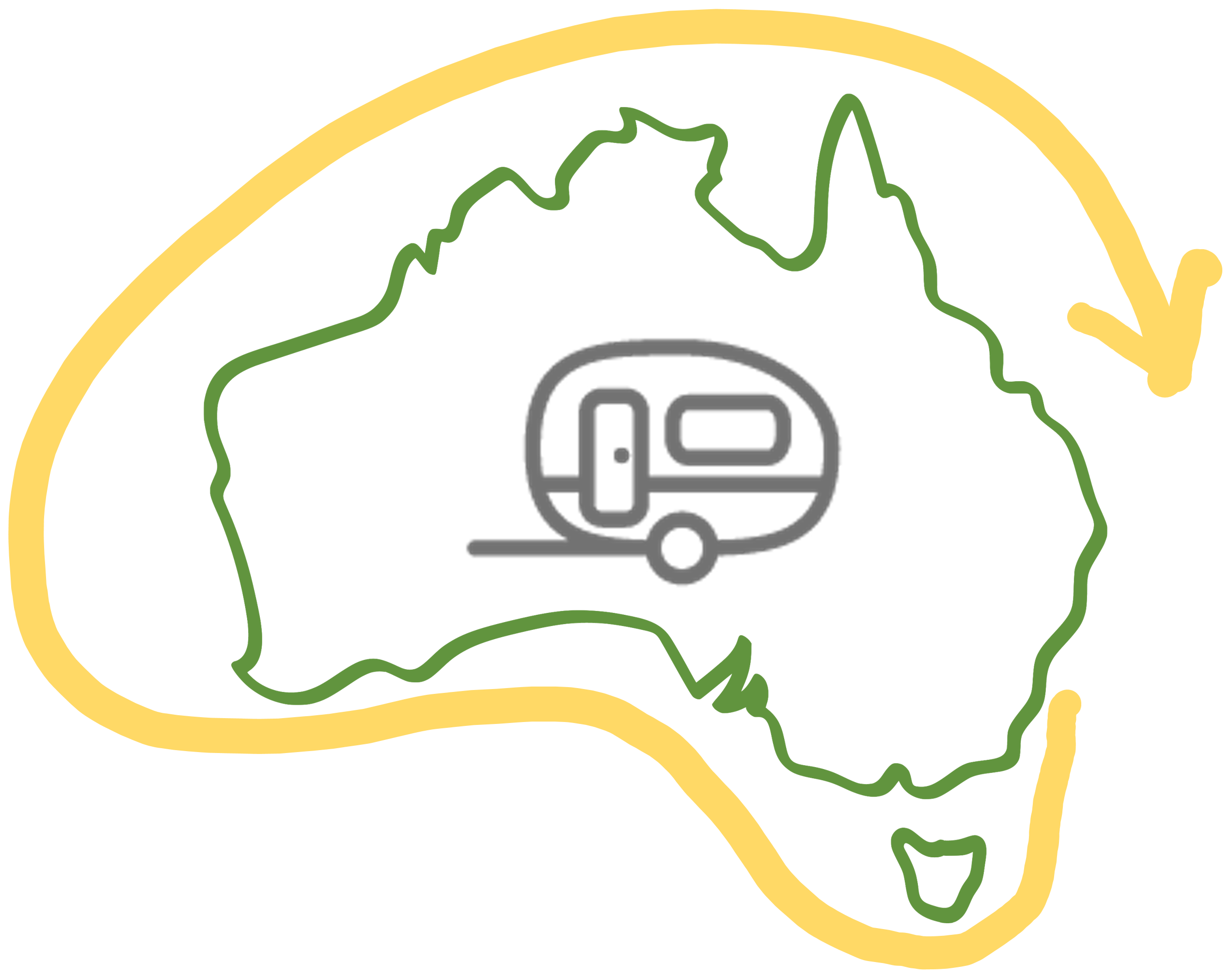


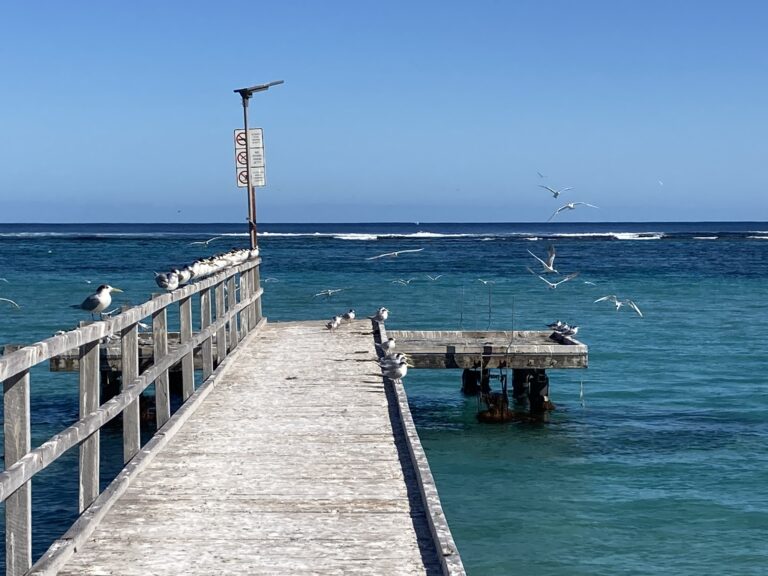
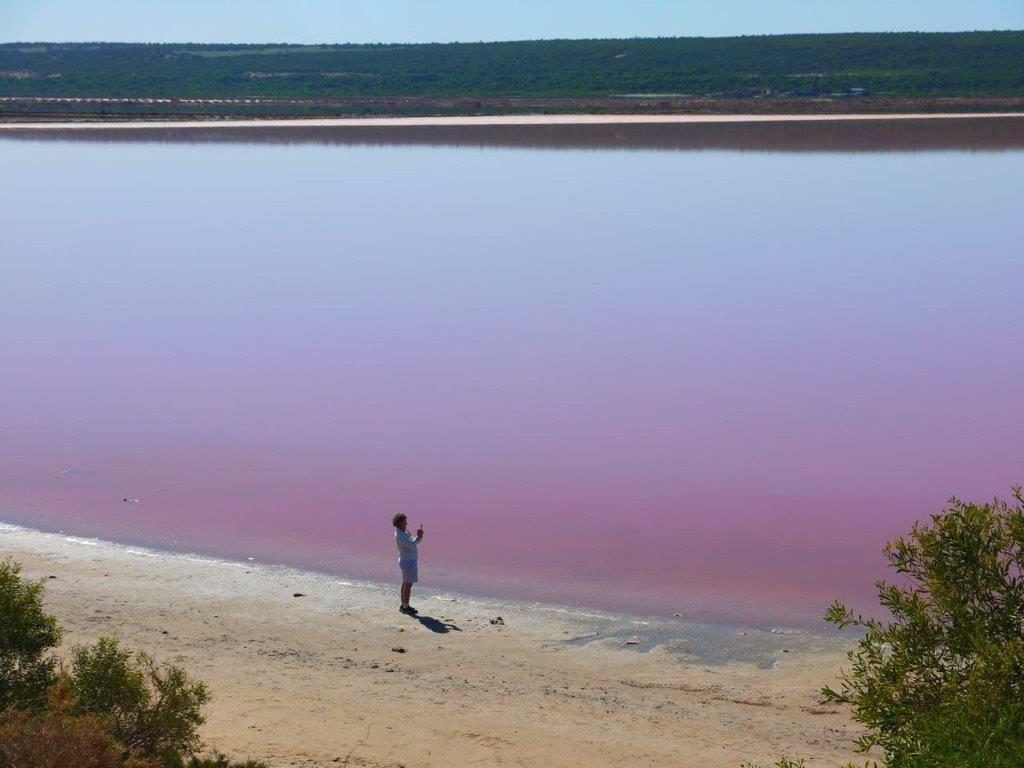
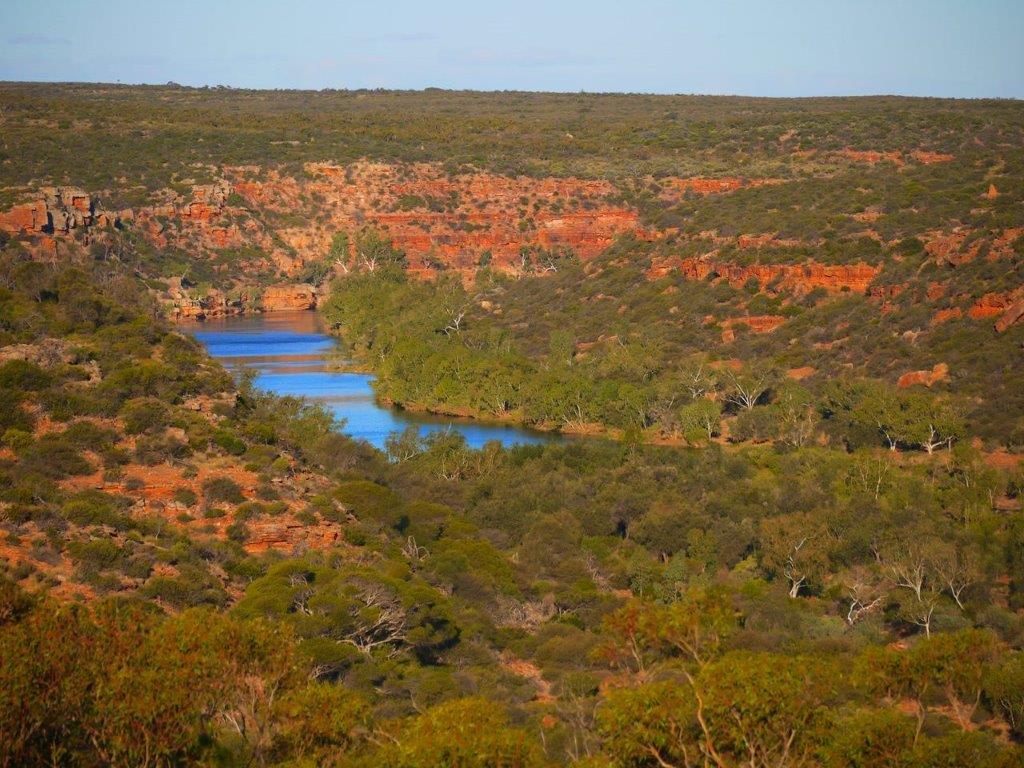
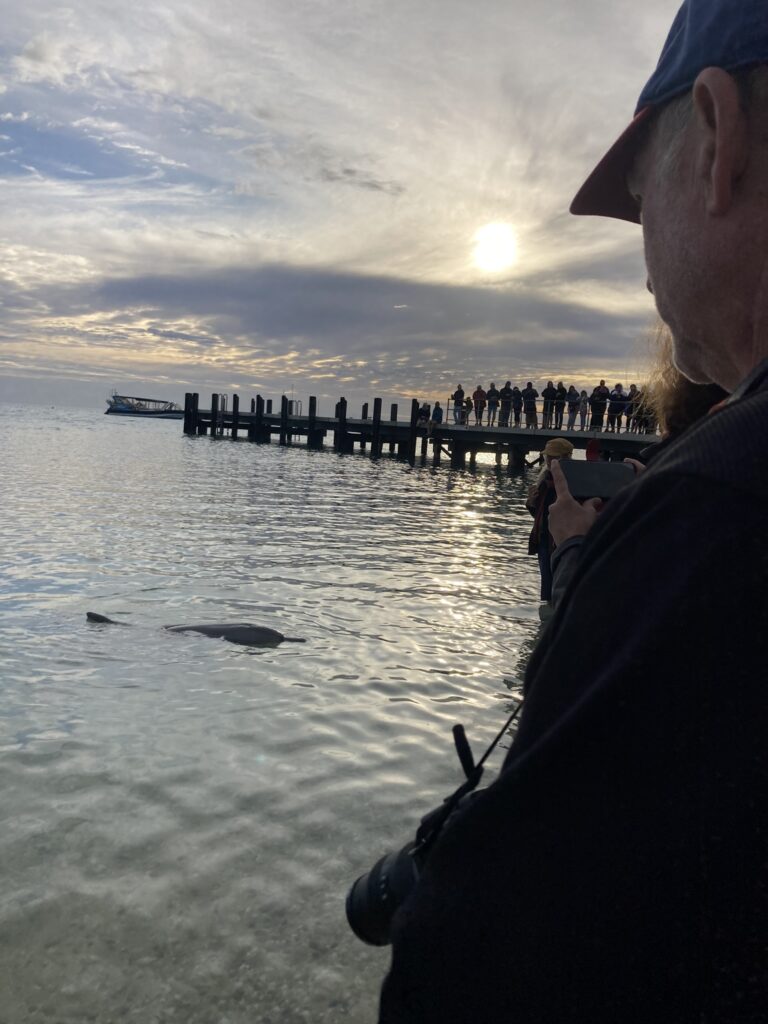
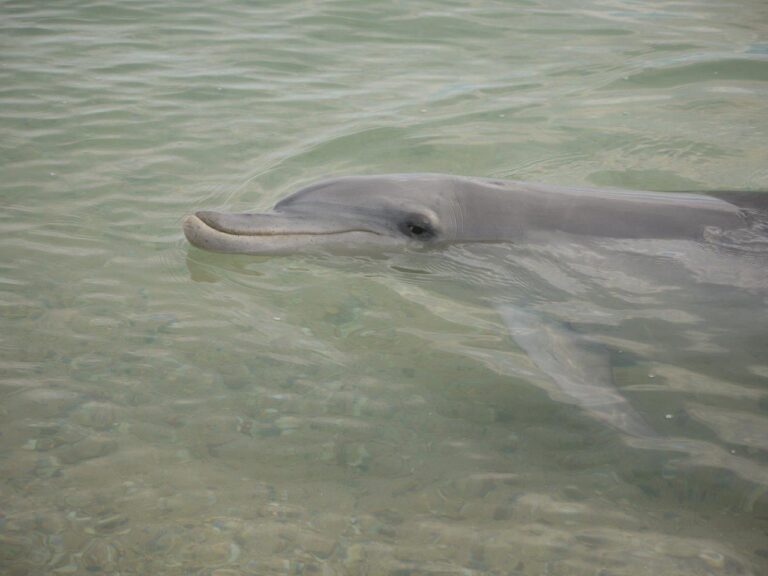
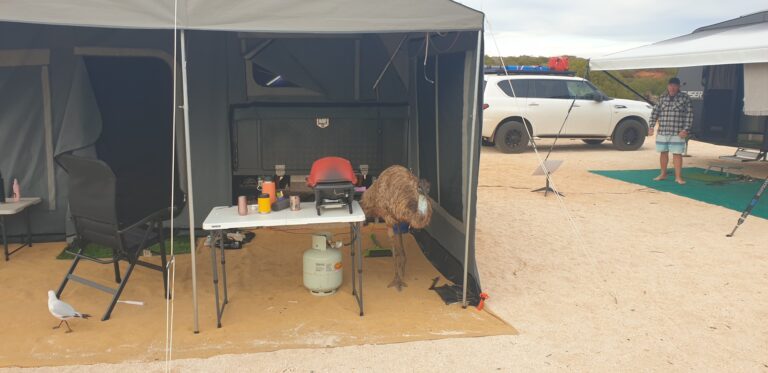
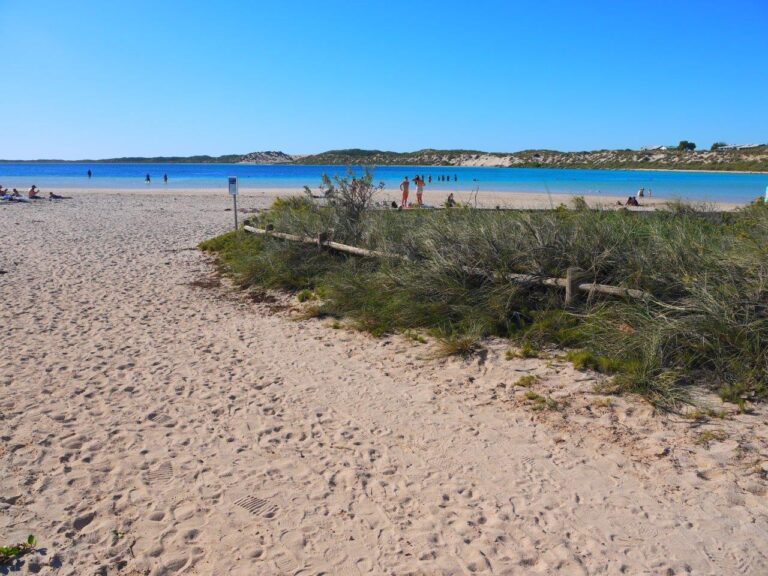
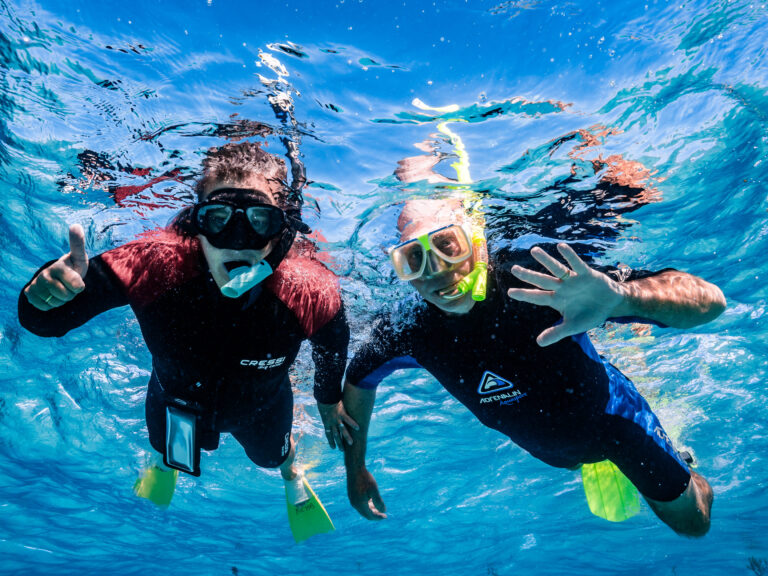

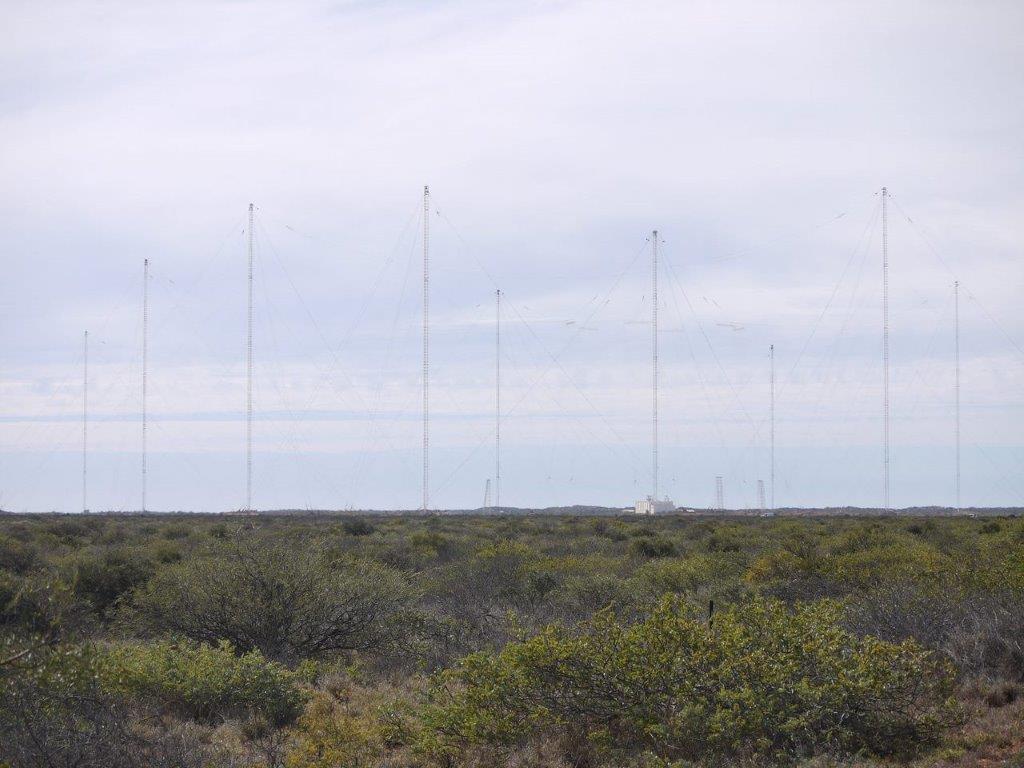
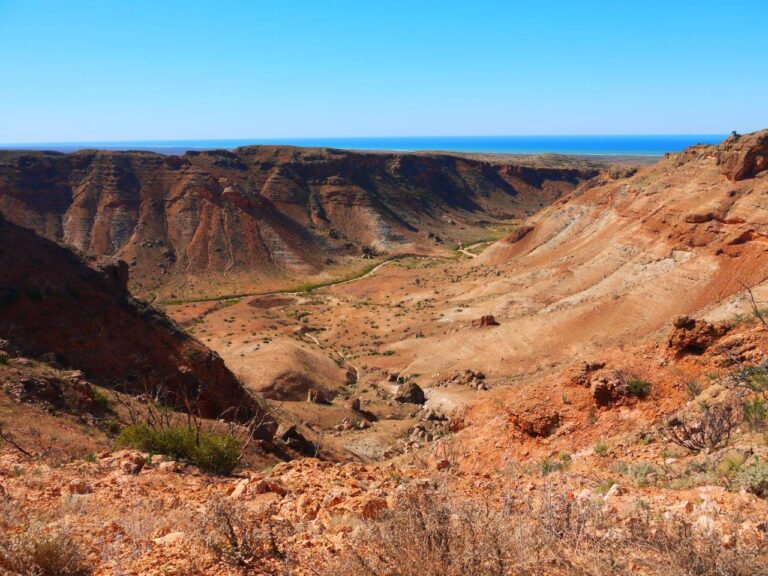
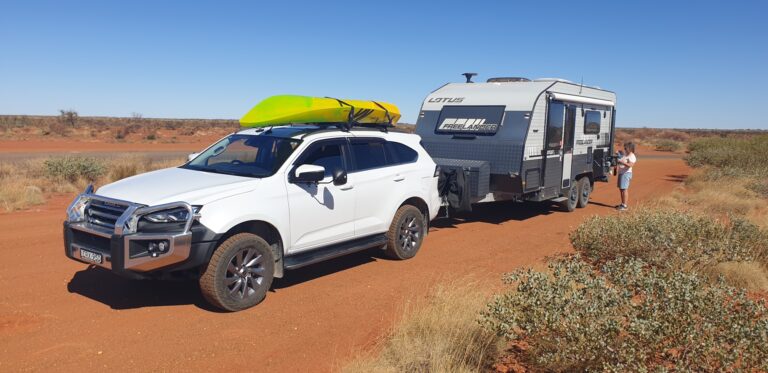
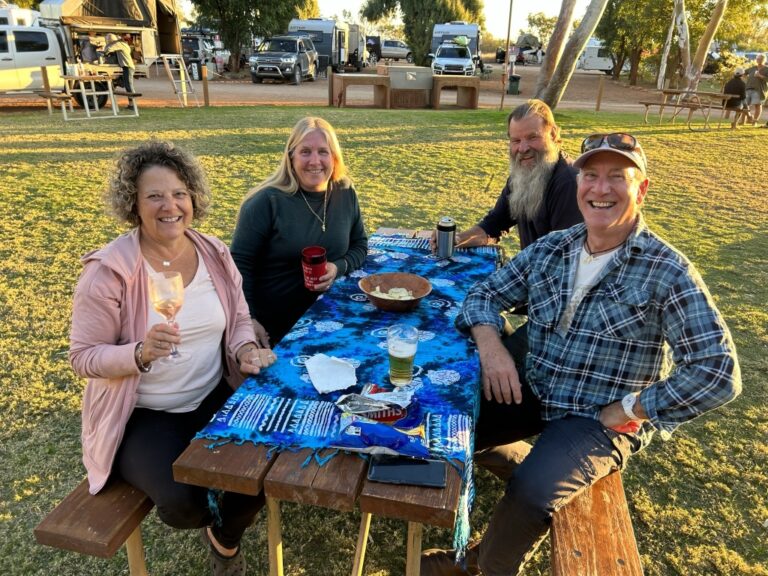
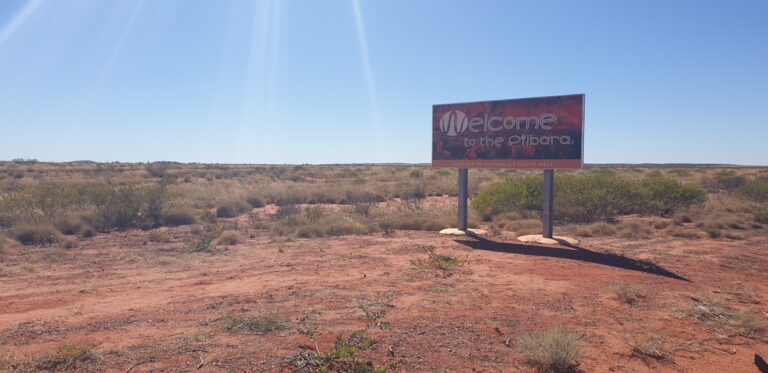
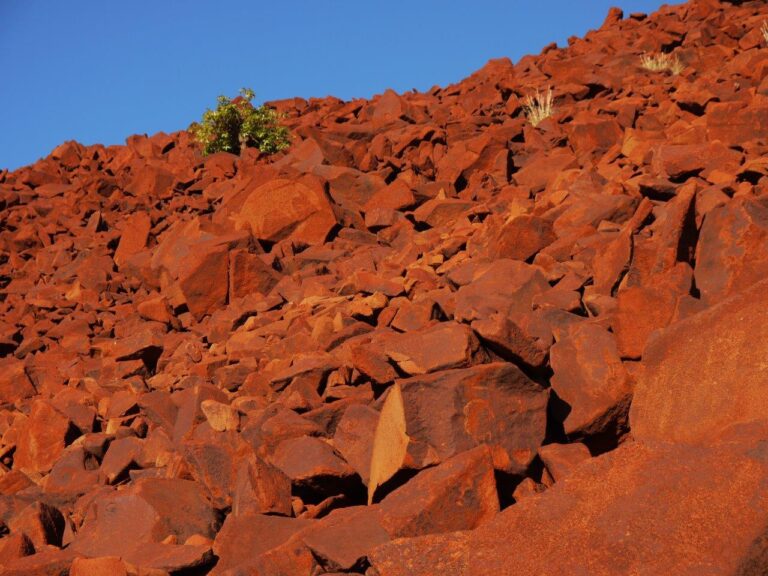

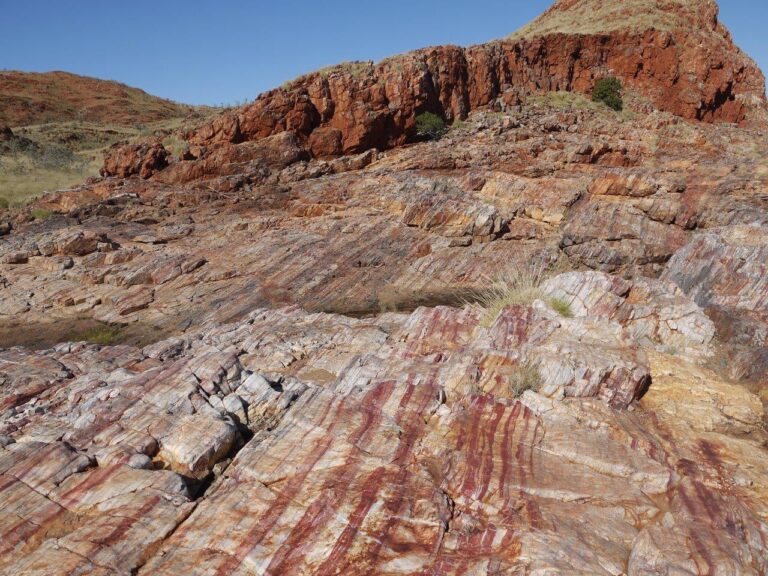
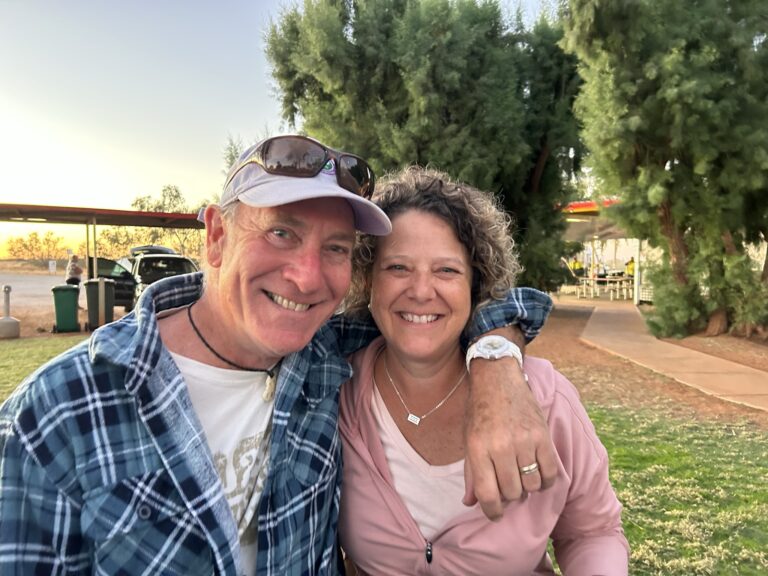
Great to hear about the Manta Rays and Whale Sharks 😎
Thanks for another great blog . Disappointed I couldn’t share Coral Bay and Ningaloo Reef with you guys .. sounds bloody fantastic. Keep enjoying yourselves .. photos are terrific ❤️